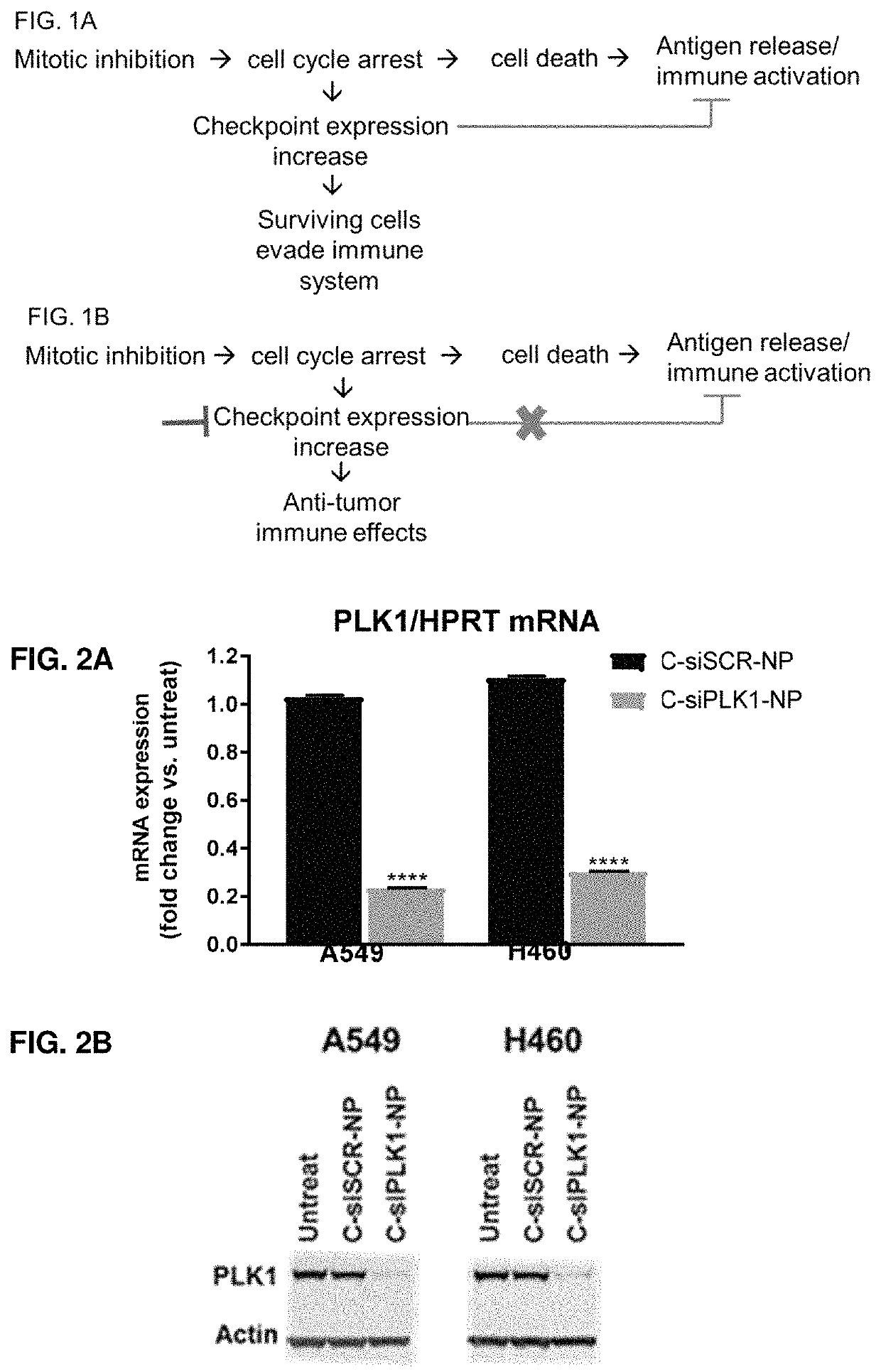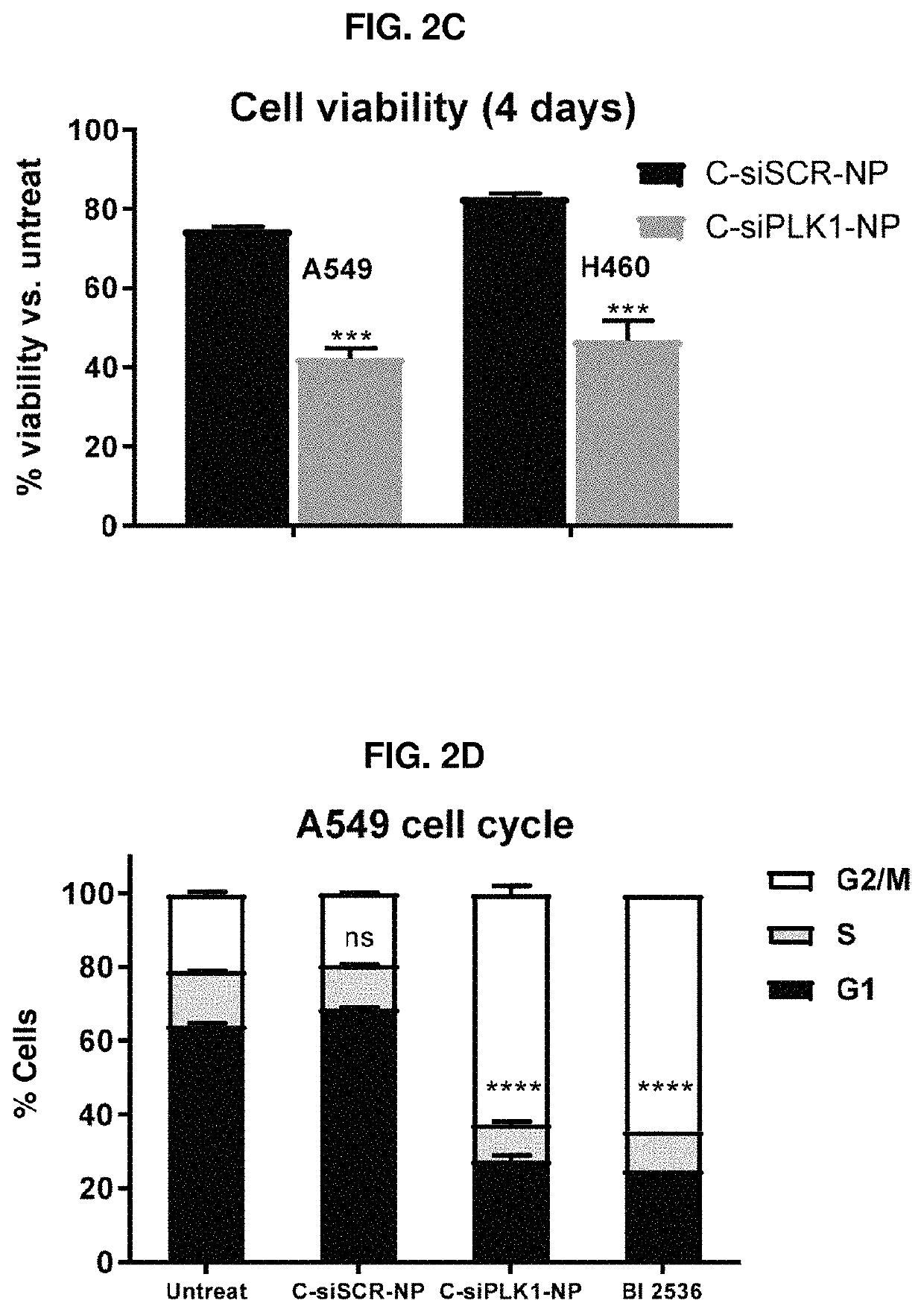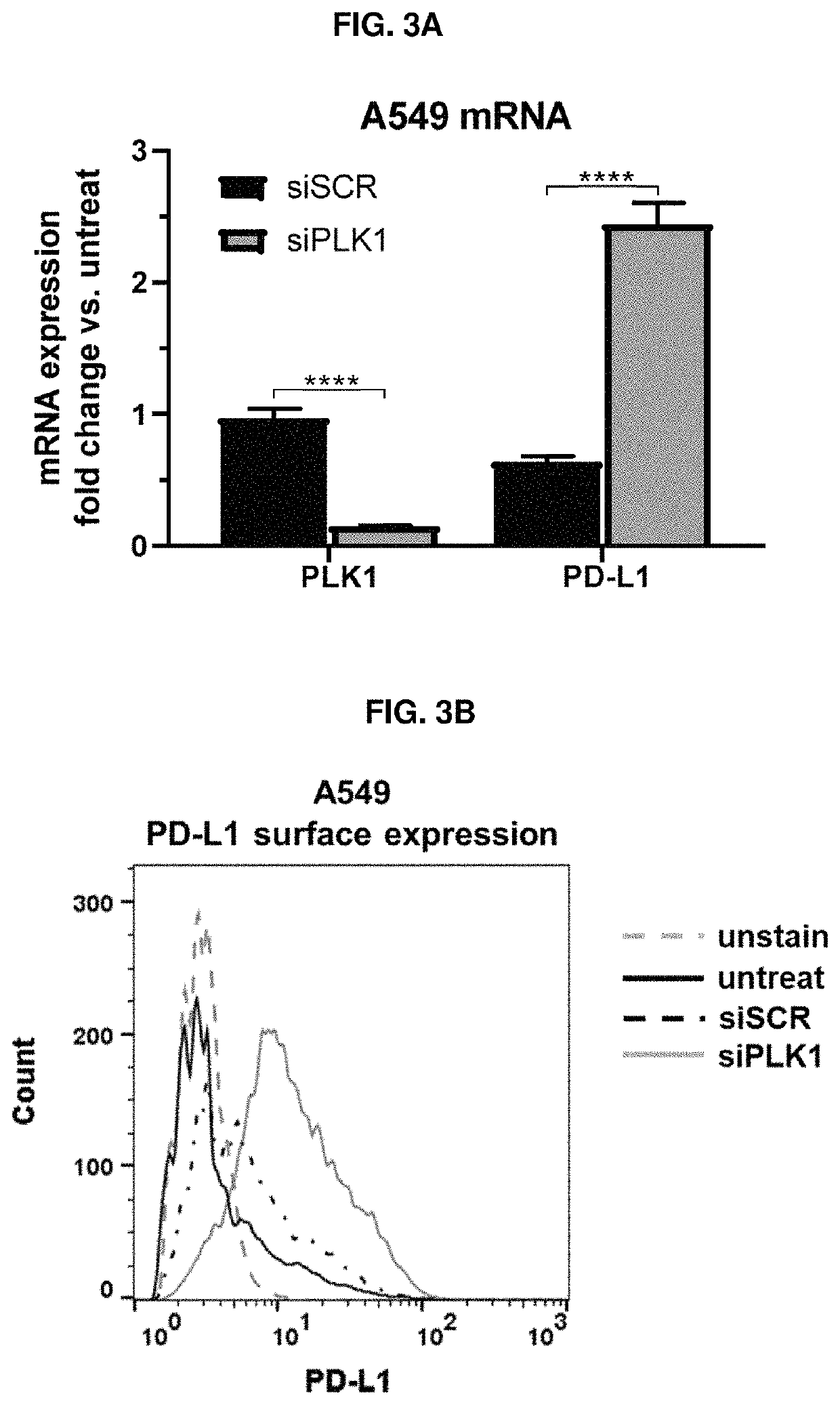Therapeutic constructs for co-delivery of mitotic kinase inhibitor and immune checkpoint inhibitor
a technology of mitotic kinase inhibitor and immuno-checkpoint inhibitor, which is applied in the direction of immunoglobulins, peptides, drugs against animals/humans, etc., can solve the problems of immune-related adverse effects, many initial responders will develop resistance and ultimately relapse, and the effect of enhancing the anti-cancer effect and enhancing the radiation therapy
- Summary
- Abstract
- Description
- Claims
- Application Information
AI Technical Summary
Benefits of technology
Problems solved by technology
Method used
Image
Examples
embodiment 1
2. The therapeutic construct of embodiment 1, wherein the delivery system includes a liposome, a lipid-based particle, a polymeric particle, an inorganic or organic nanoparticle or microparticle, or a hybrid thereof.
embodiment 2
3. The therapeutic construct of embodiment 2, wherein the delivery vehicle includes one or more of fullerenes, endohedral metallofullerenes, trimetallic nitride templated endohedral metallofullerenes, single-walled and multi-walled carbon nanotubes, branched and dendritic carbon nanotubes, gold nanorods, silver nanorods, single-walled and multi-walled boron / nitrate nanotubes, carbon nanotube peapods, carbon nanohorns, carbon nanohorn peapods, liposomes, nanoshells, dendrimers, microparticles, quantum dots, superparamagnetic nanoparticles, calcium phosphate particles, aluminum salt particles, nanorods, cellulose nanoparticles, silicon, silica and polymer micro- and nano-spheres, silica-shells, biodegradable PLGA micro- and nano-spheres, gold nanoparticles, cerium oxide particles, zinc oxide particles, silver nanoparticles, carbon nanoparticles, iron nanoparticles, and / or modified micelles.
4. The therapeutic construct of any one of embodiments 1-3, wherein the delivery vehicle compris...
embodiment 4
5. The therapeutic construct of embodiment 4, wherein the mesoporous silica nanoparticle has a size of about 5-200 nm.
6. The therapeutic construct of embodiments 4 or 5, wherein the mesoporous silica nanoparticle is coated with cross-linked polyethyleneimine and polyethylene glycol.
7. The therapeutic construct of any one of embodiments 1-6, wherein the mitotic kinase inhibitor and / or immune checkpoint inhibitor includes an oligonucleotide, a polynucleotide, a small molecule inhibitor, or an antibody.
8. The therapeutic construct of any one of embodiments 1-7, wherein the at least one mitotic kinase inhibitor is an inhibitor of a polo-like kinase (PLK), an Aurora kinase, cyclin-dependent kinase (CDK)1, CDK2, HASPIN, monopolar spindle 1 kinase (Mps1), or a NimA-related kinase (NEK).
9. The therapeutic construct of any one of embodiments 1-8, wherein the mitotic kinase inhibitor includes one or more of GSK461364, BI2536, Tak960, NMS-P937, volasertib, Chk 1 Kinase Inhibitor LY2603618, AU1...
PUM
| Property | Measurement | Unit |
|---|---|---|
| mean particle size | aaaaa | aaaaa |
| hydrodynamic size | aaaaa | aaaaa |
| hydrodynamic size | aaaaa | aaaaa |
Abstract
Description
Claims
Application Information
 Login to View More
Login to View More - R&D
- Intellectual Property
- Life Sciences
- Materials
- Tech Scout
- Unparalleled Data Quality
- Higher Quality Content
- 60% Fewer Hallucinations
Browse by: Latest US Patents, China's latest patents, Technical Efficacy Thesaurus, Application Domain, Technology Topic, Popular Technical Reports.
© 2025 PatSnap. All rights reserved.Legal|Privacy policy|Modern Slavery Act Transparency Statement|Sitemap|About US| Contact US: help@patsnap.com



